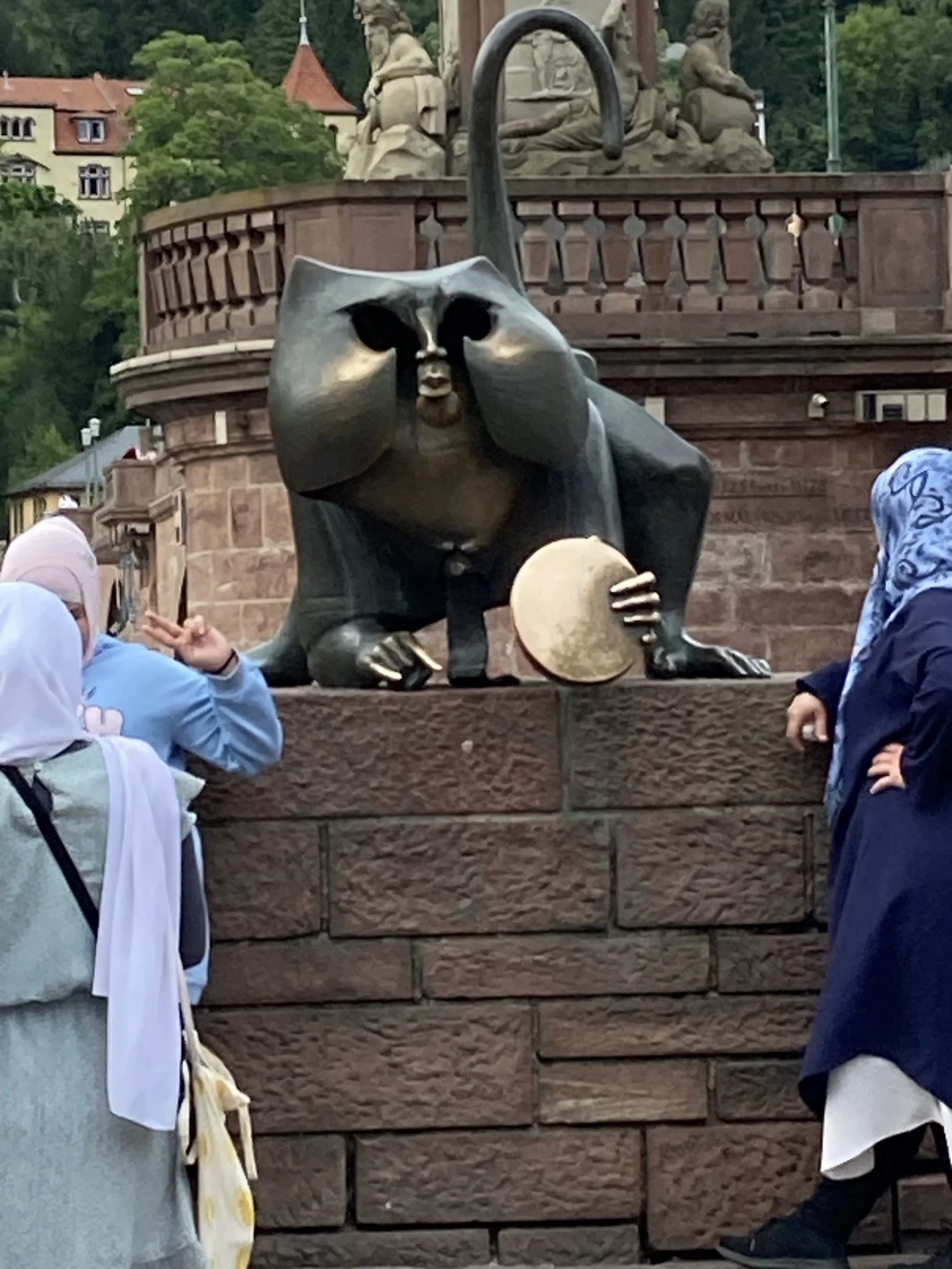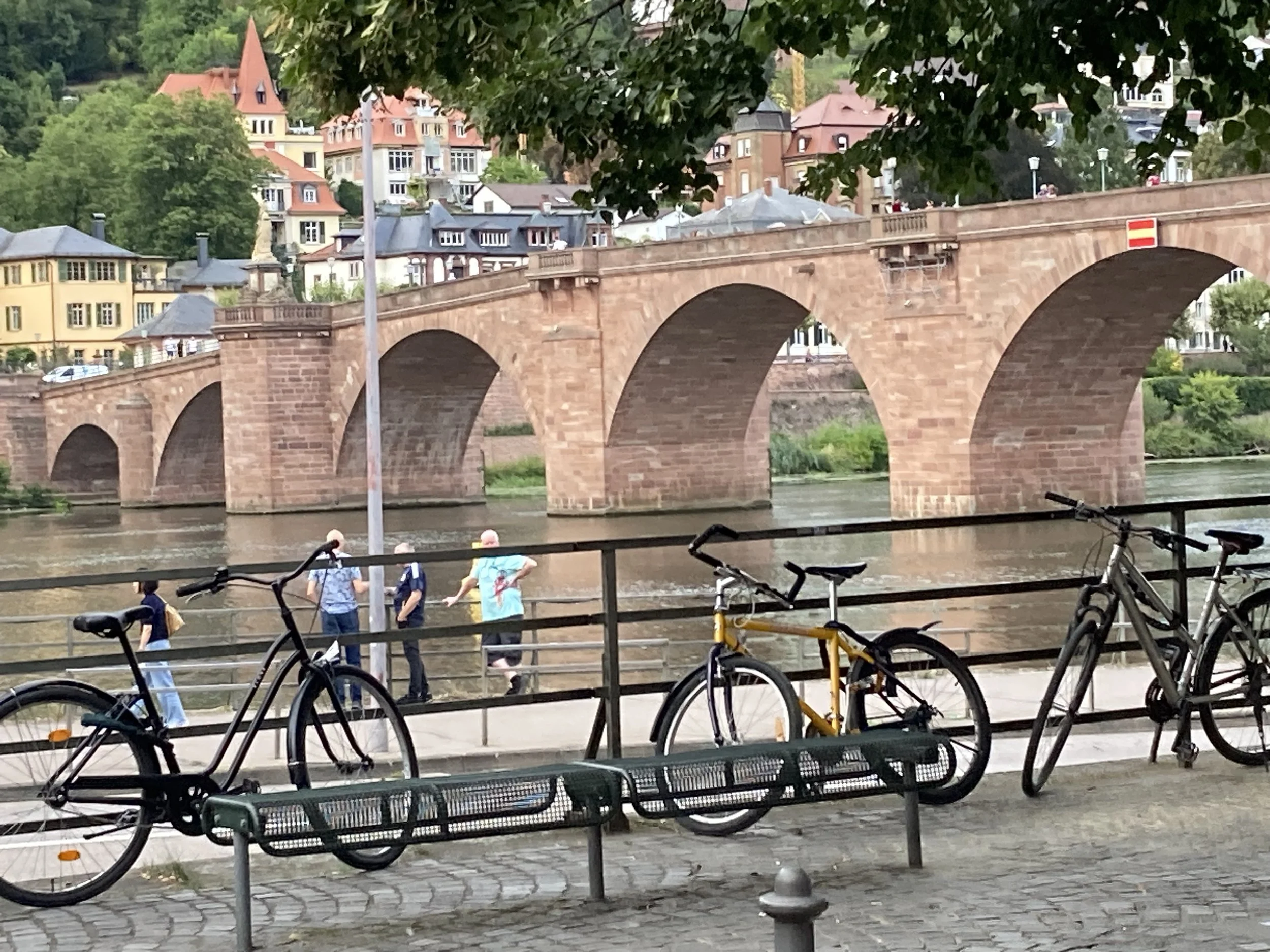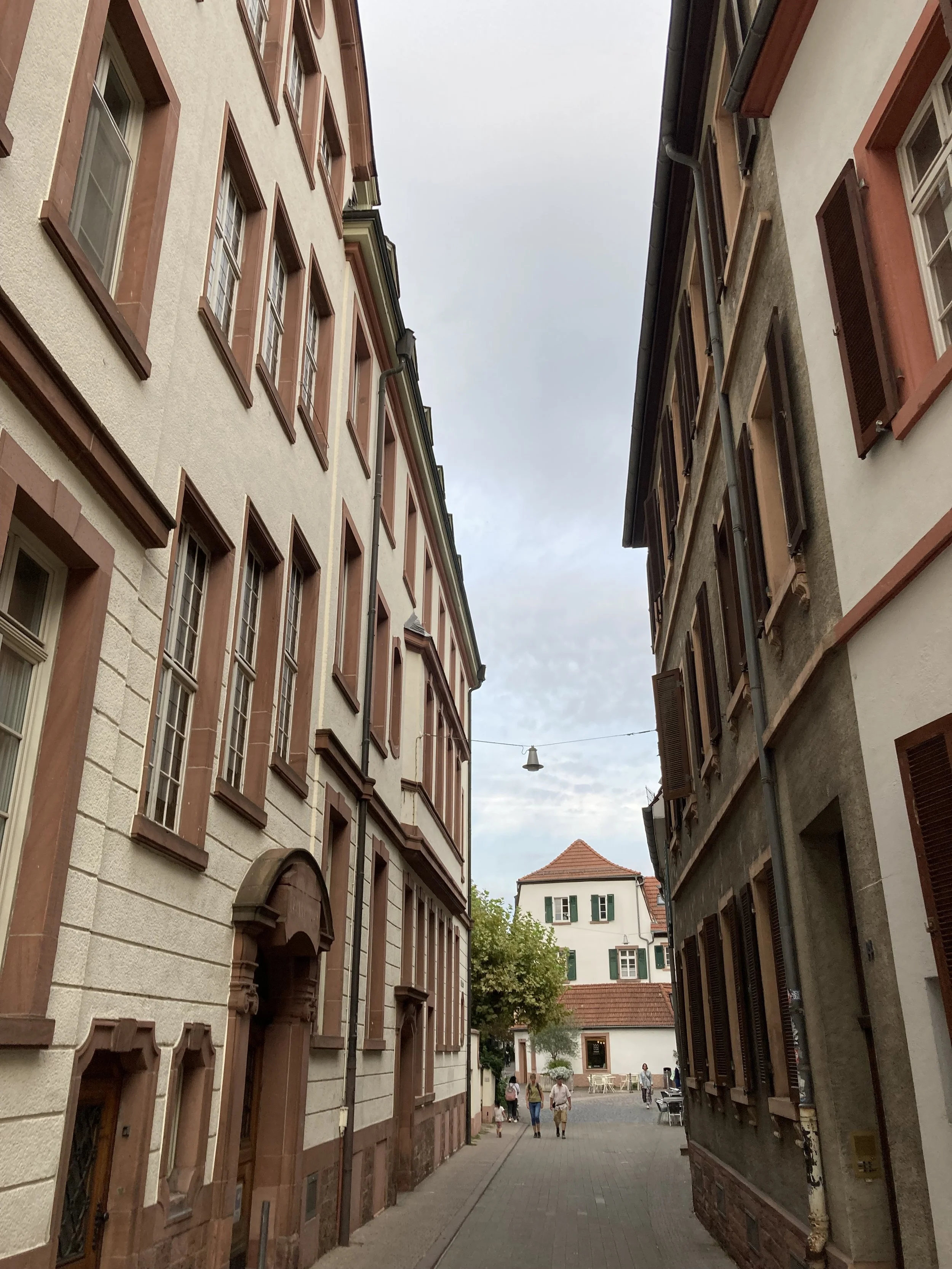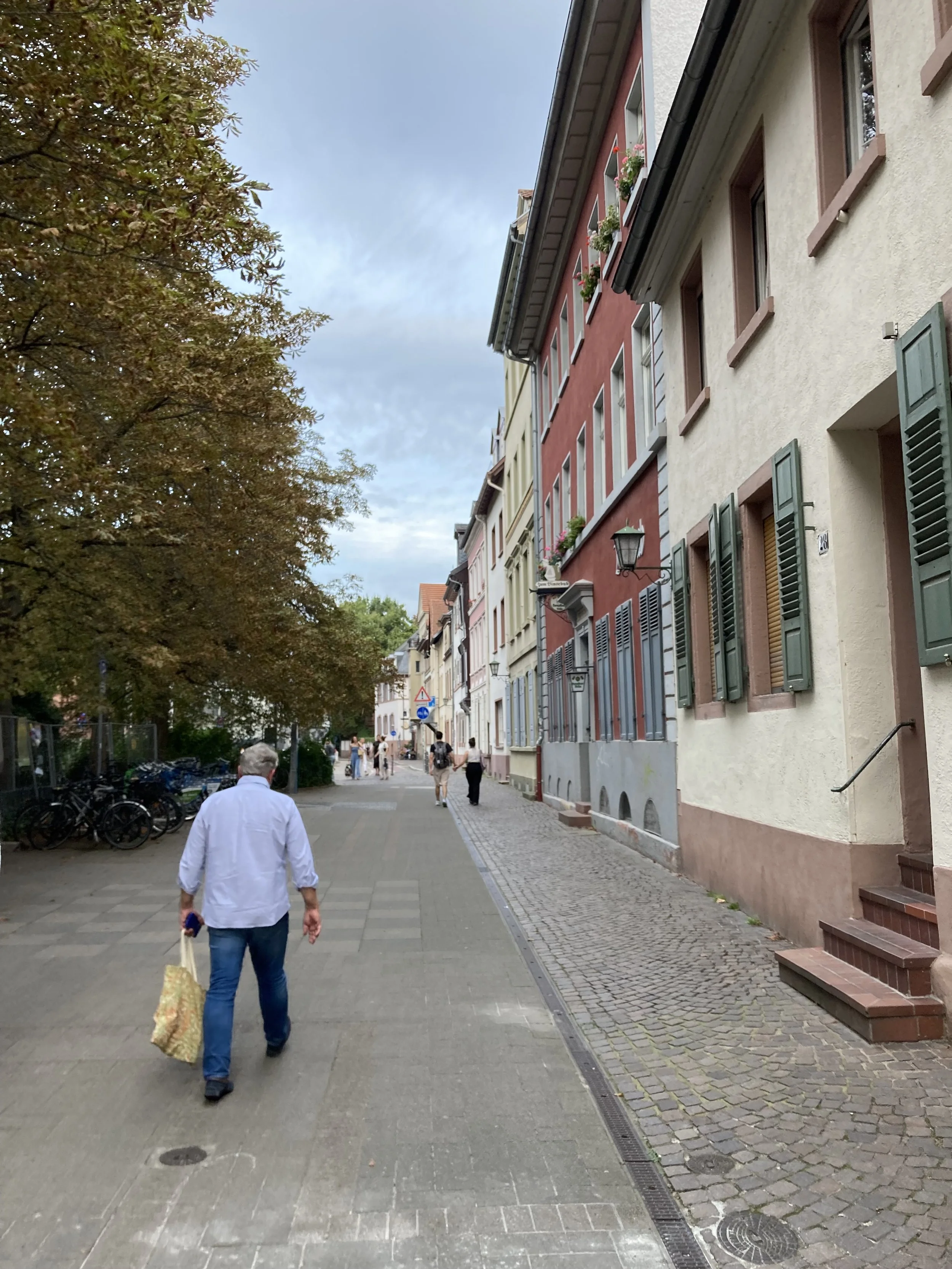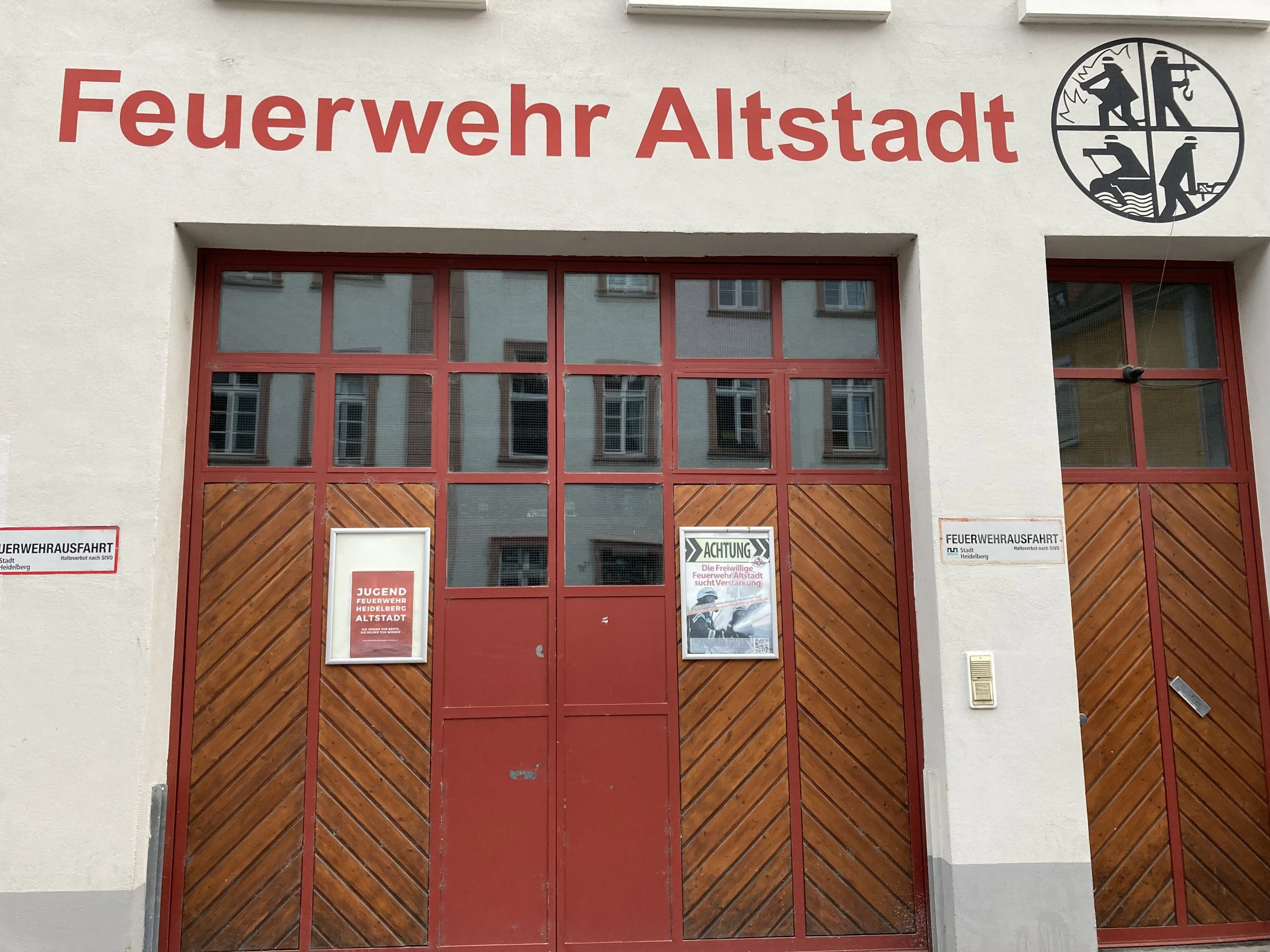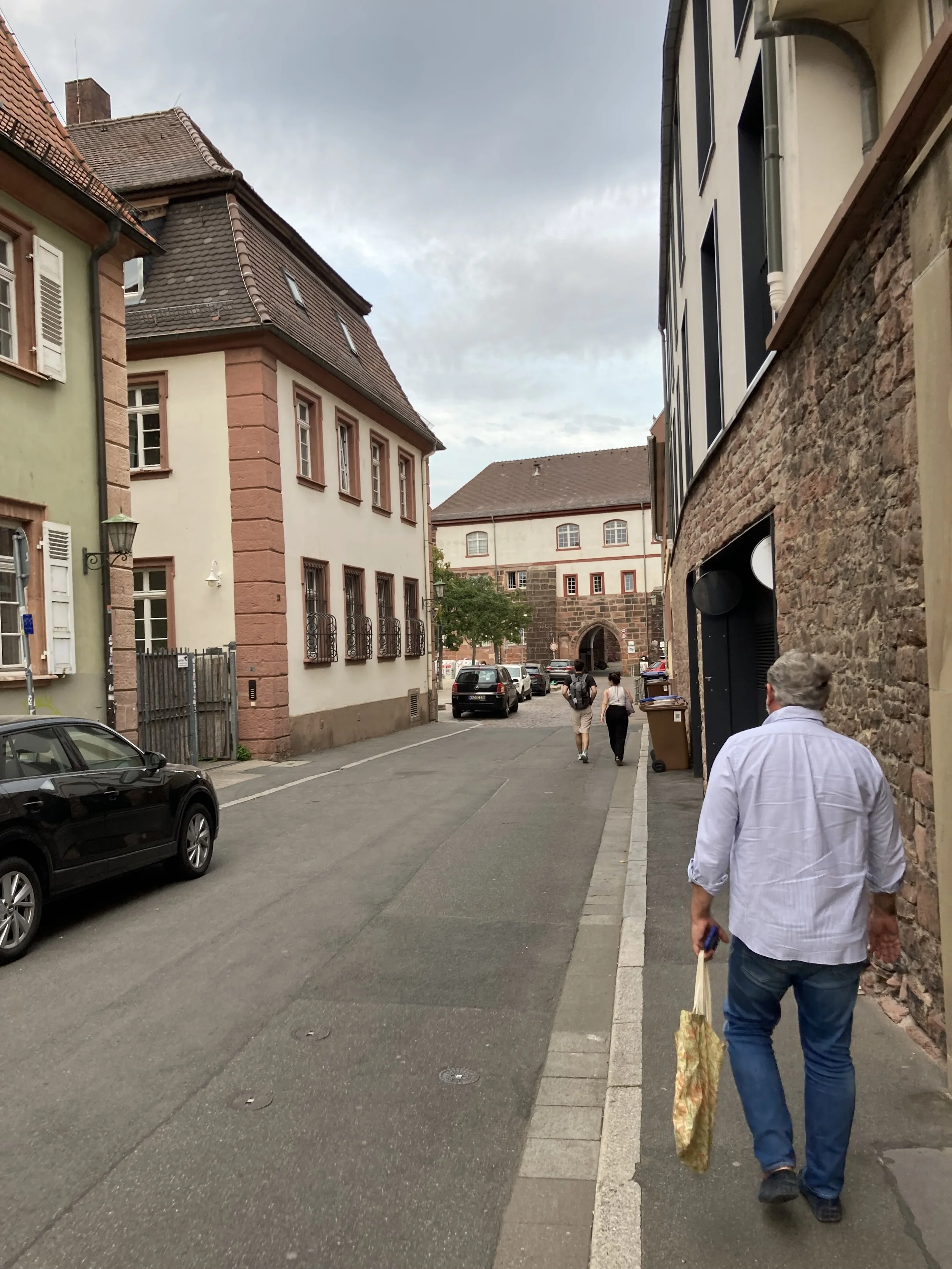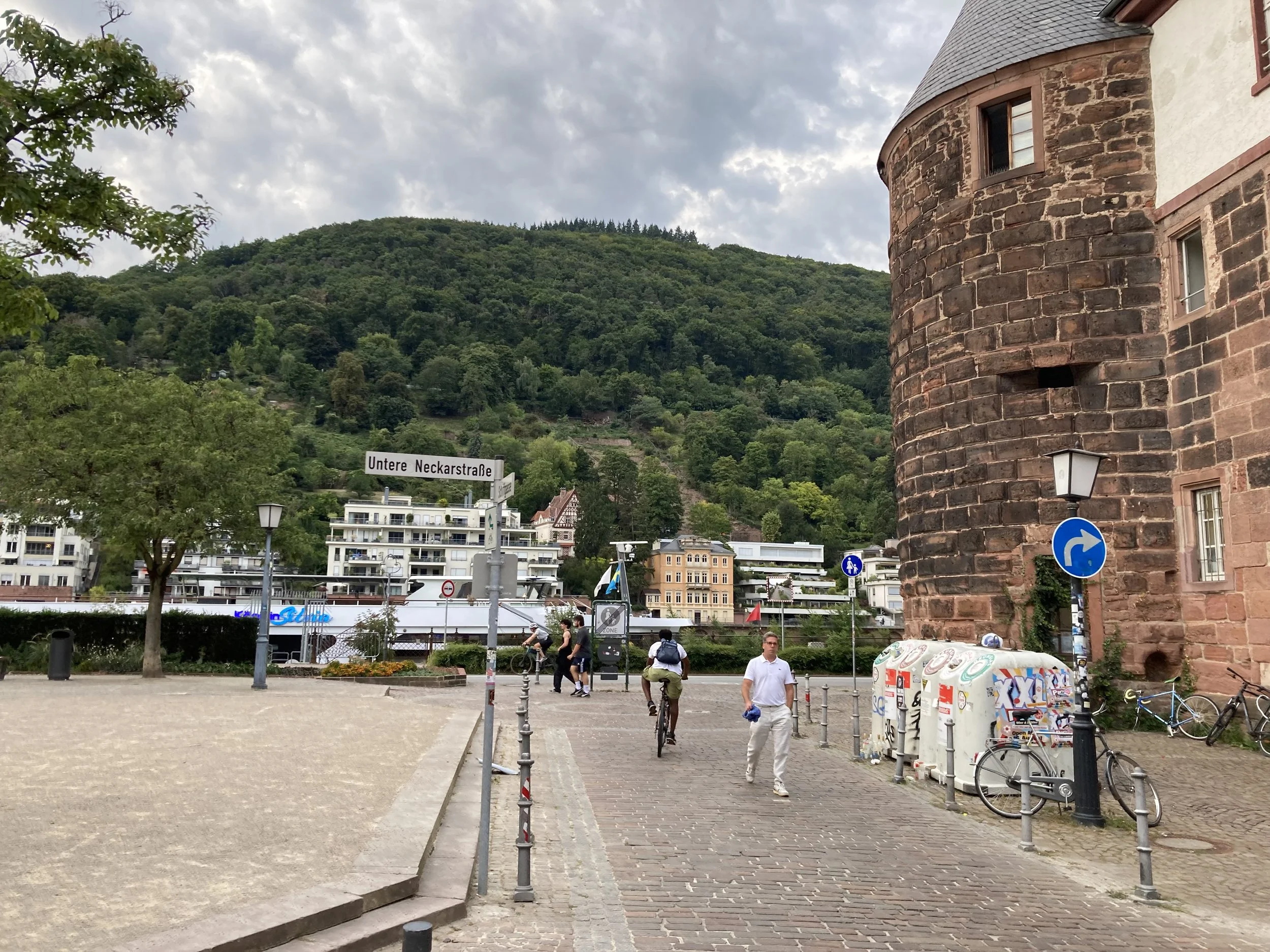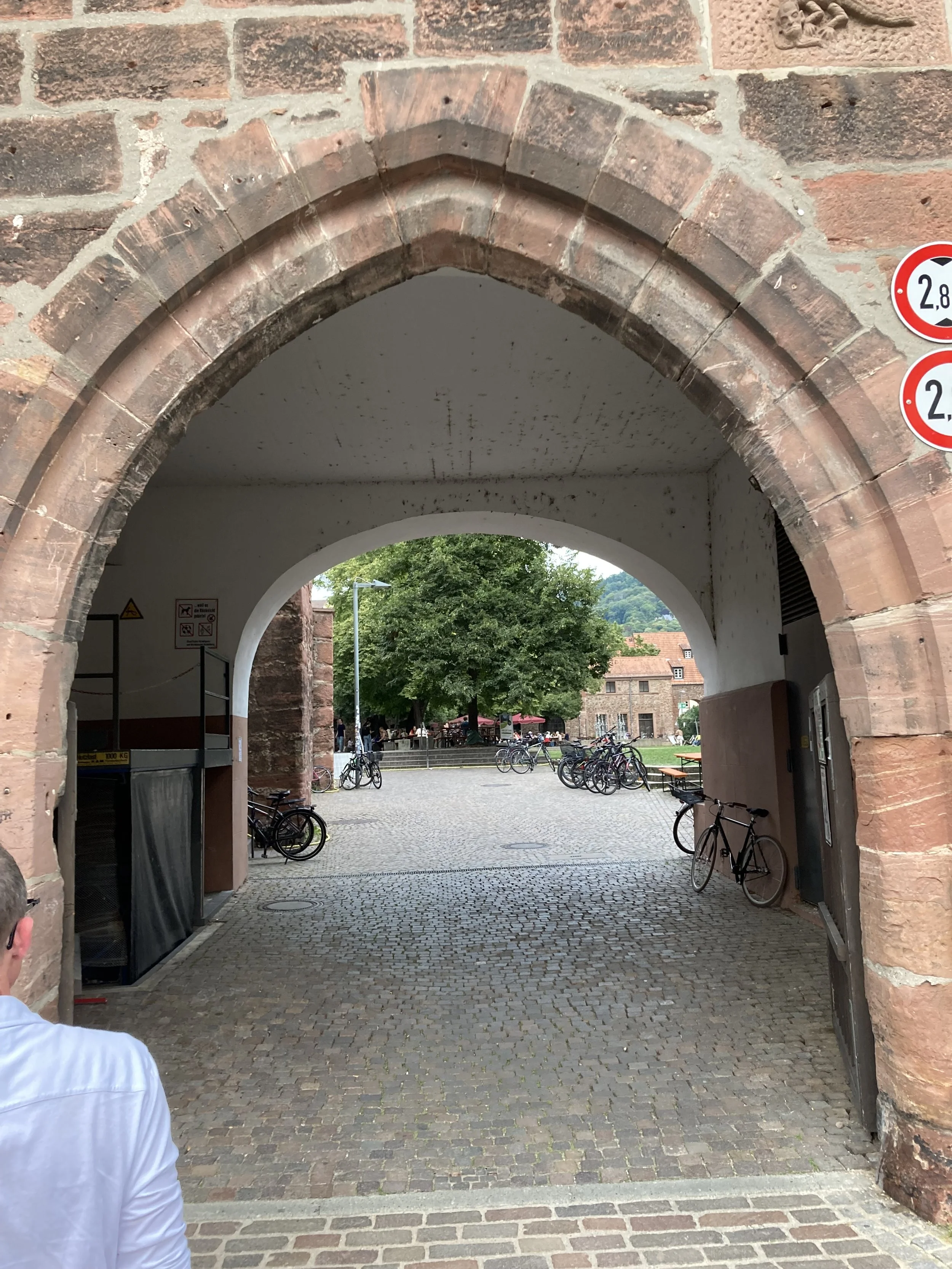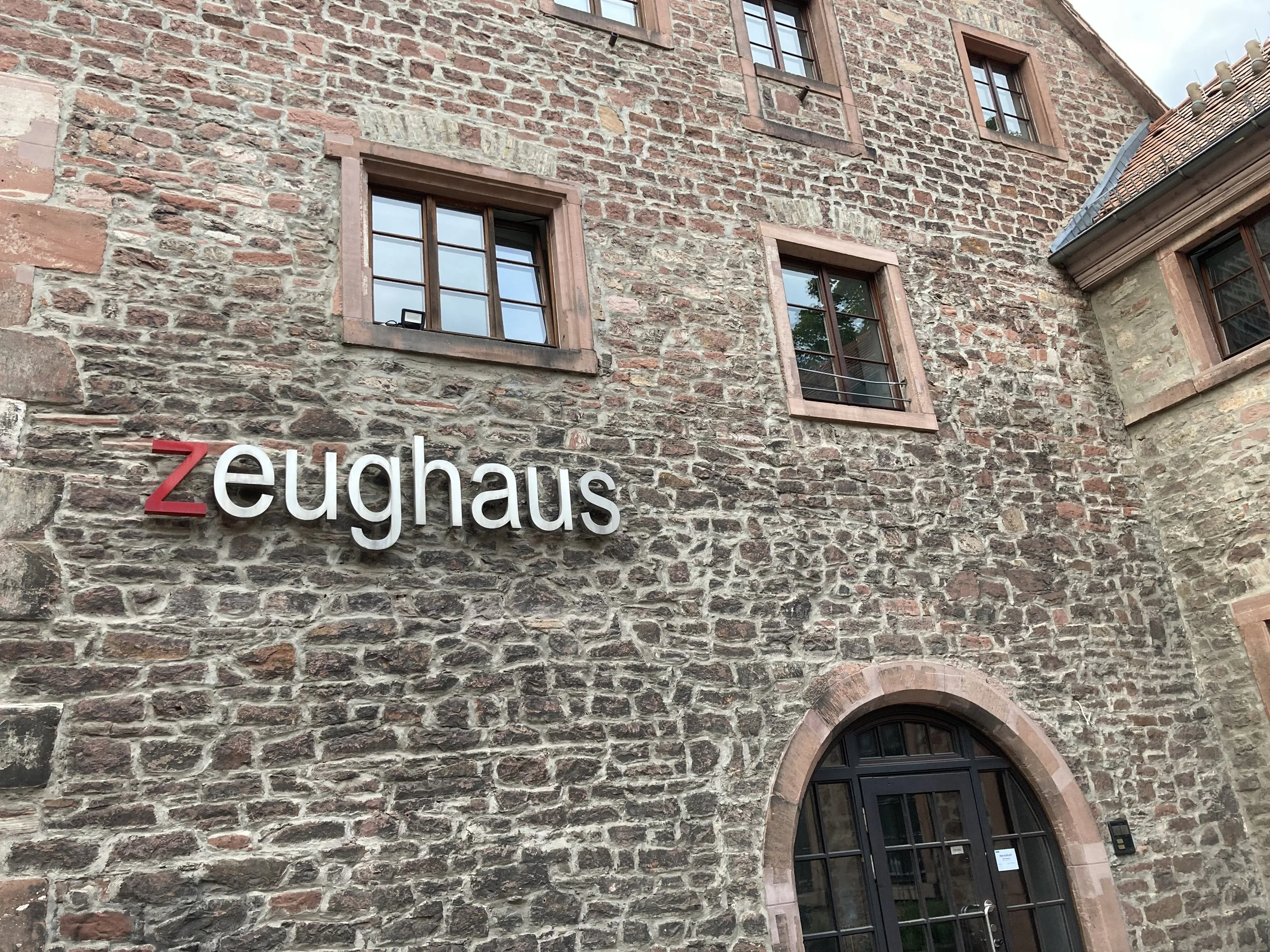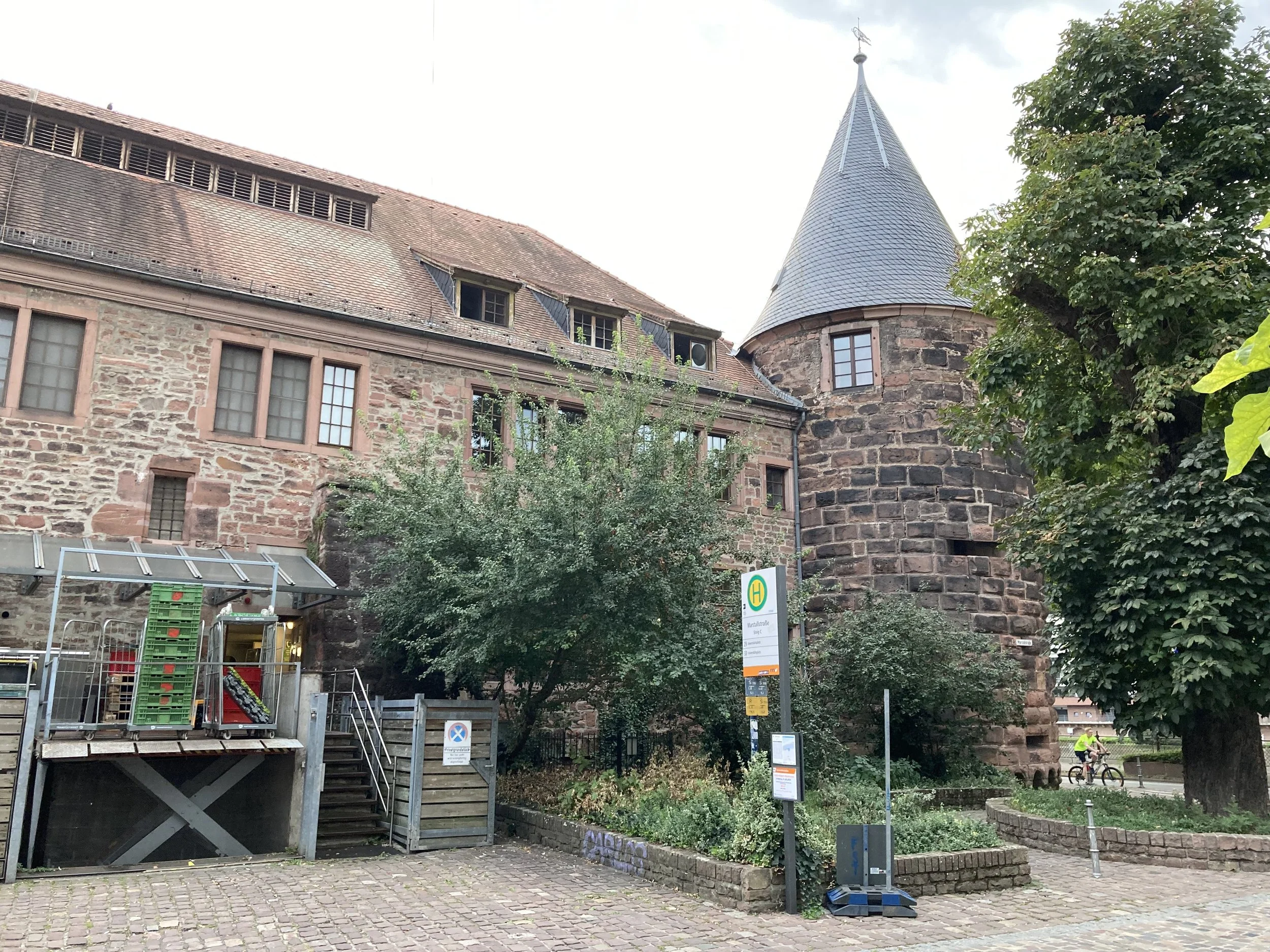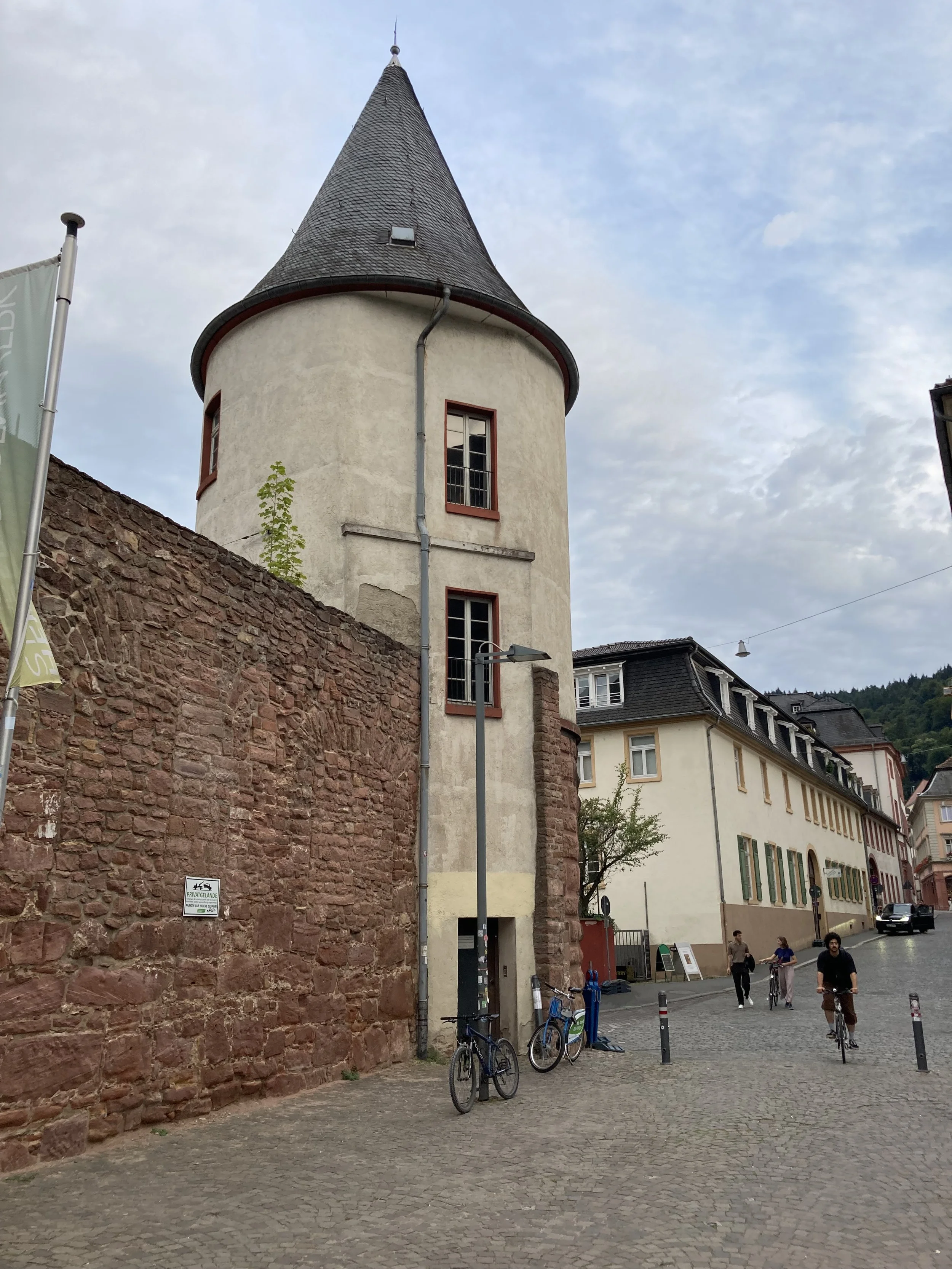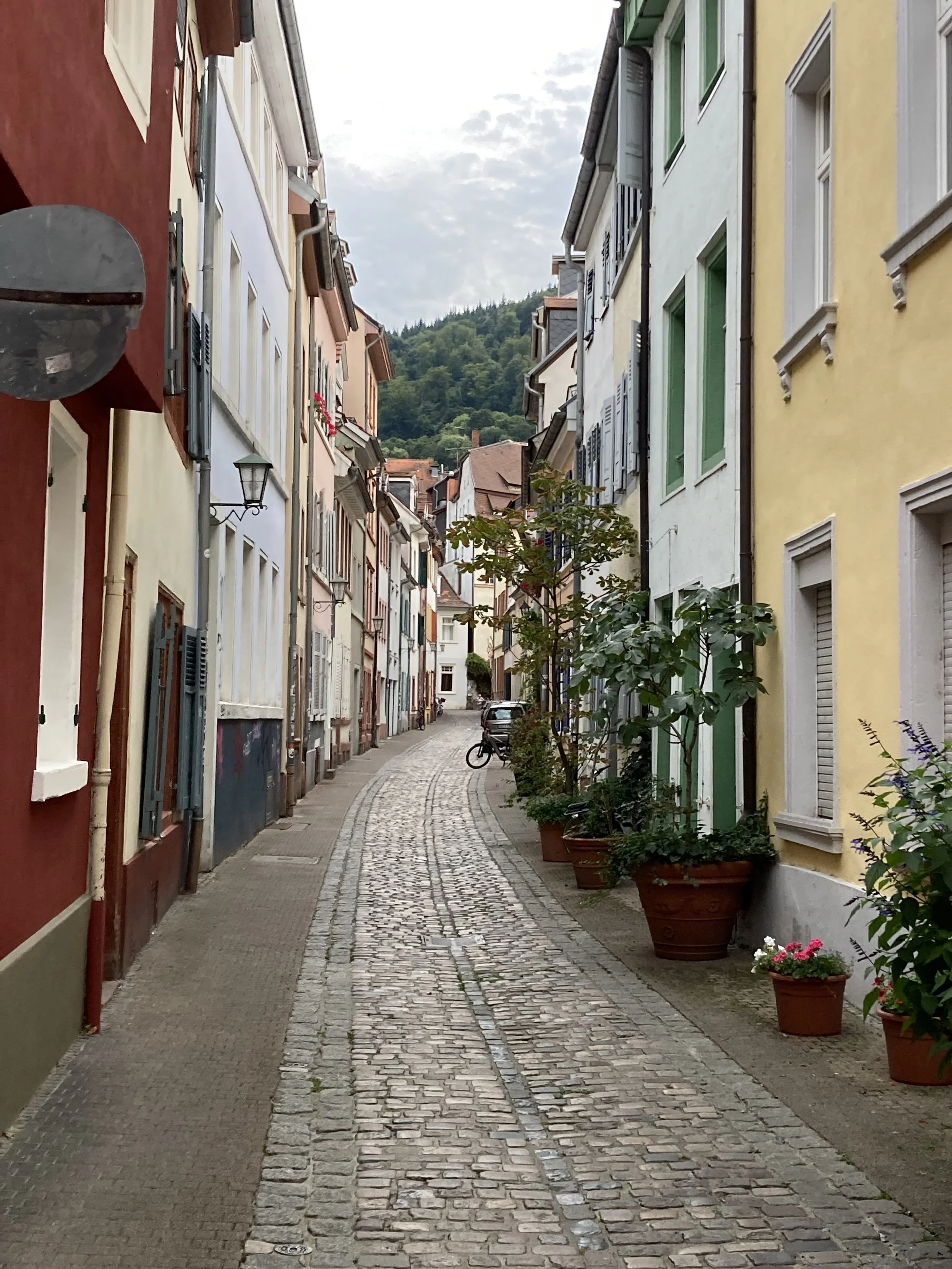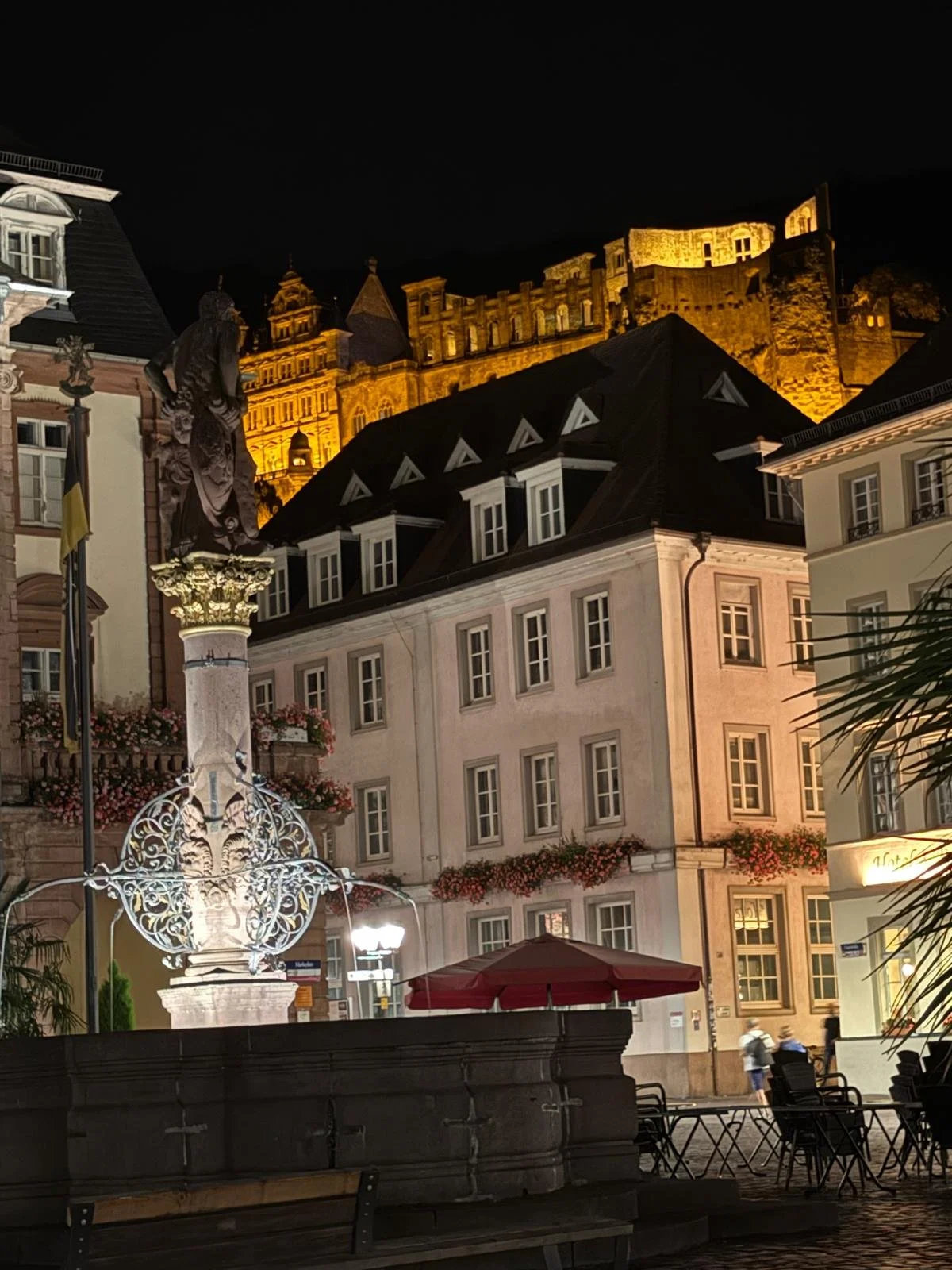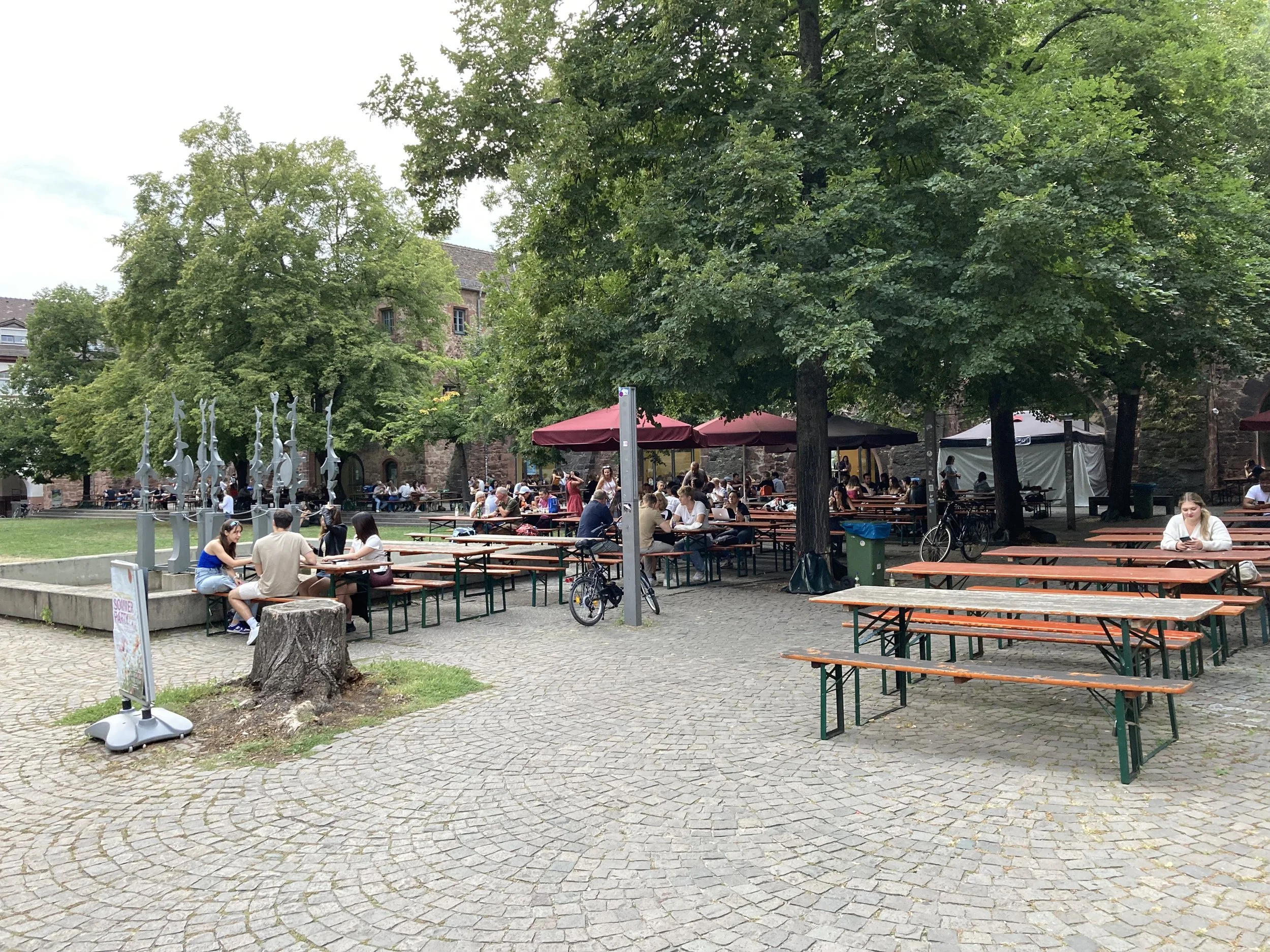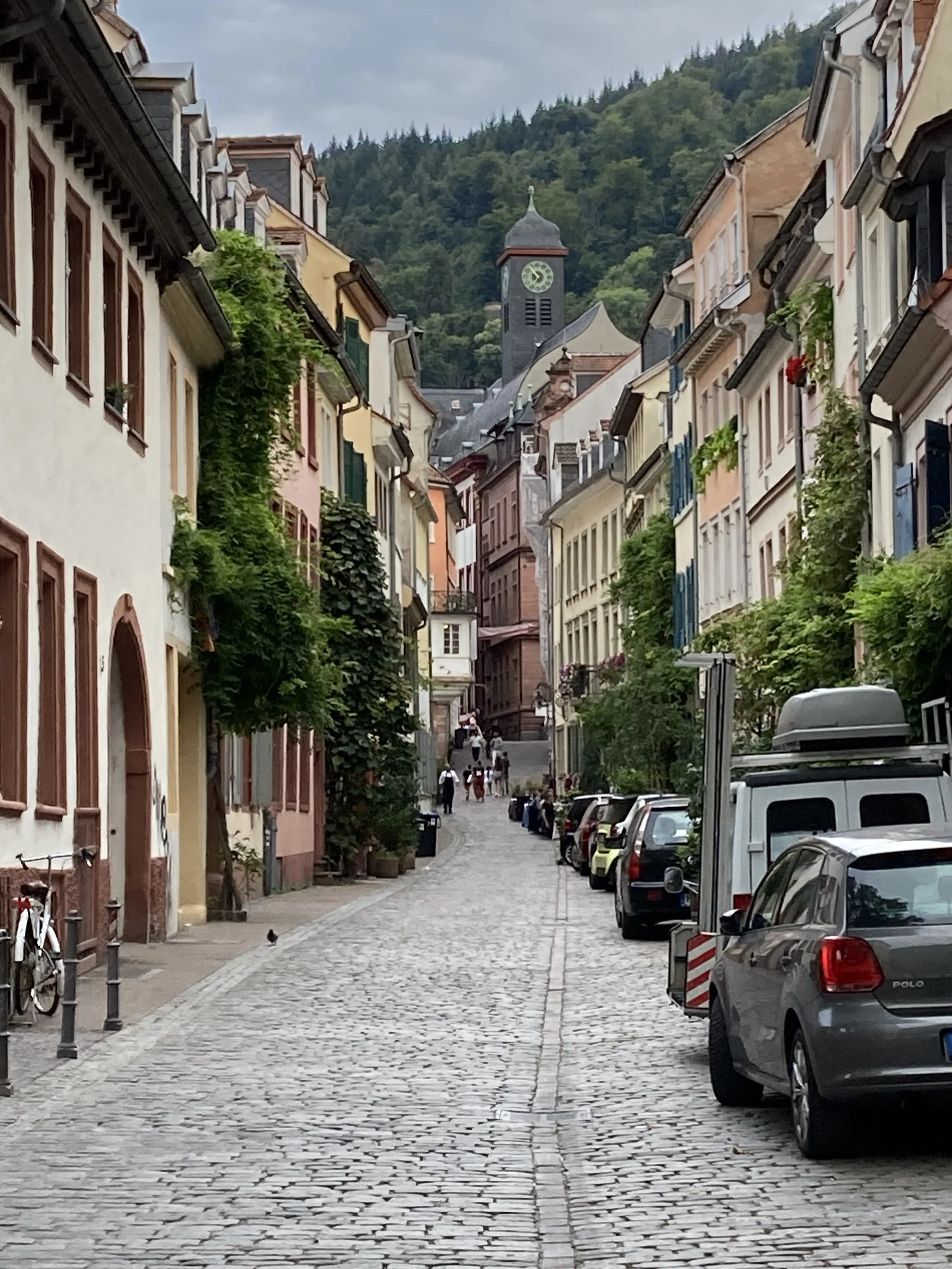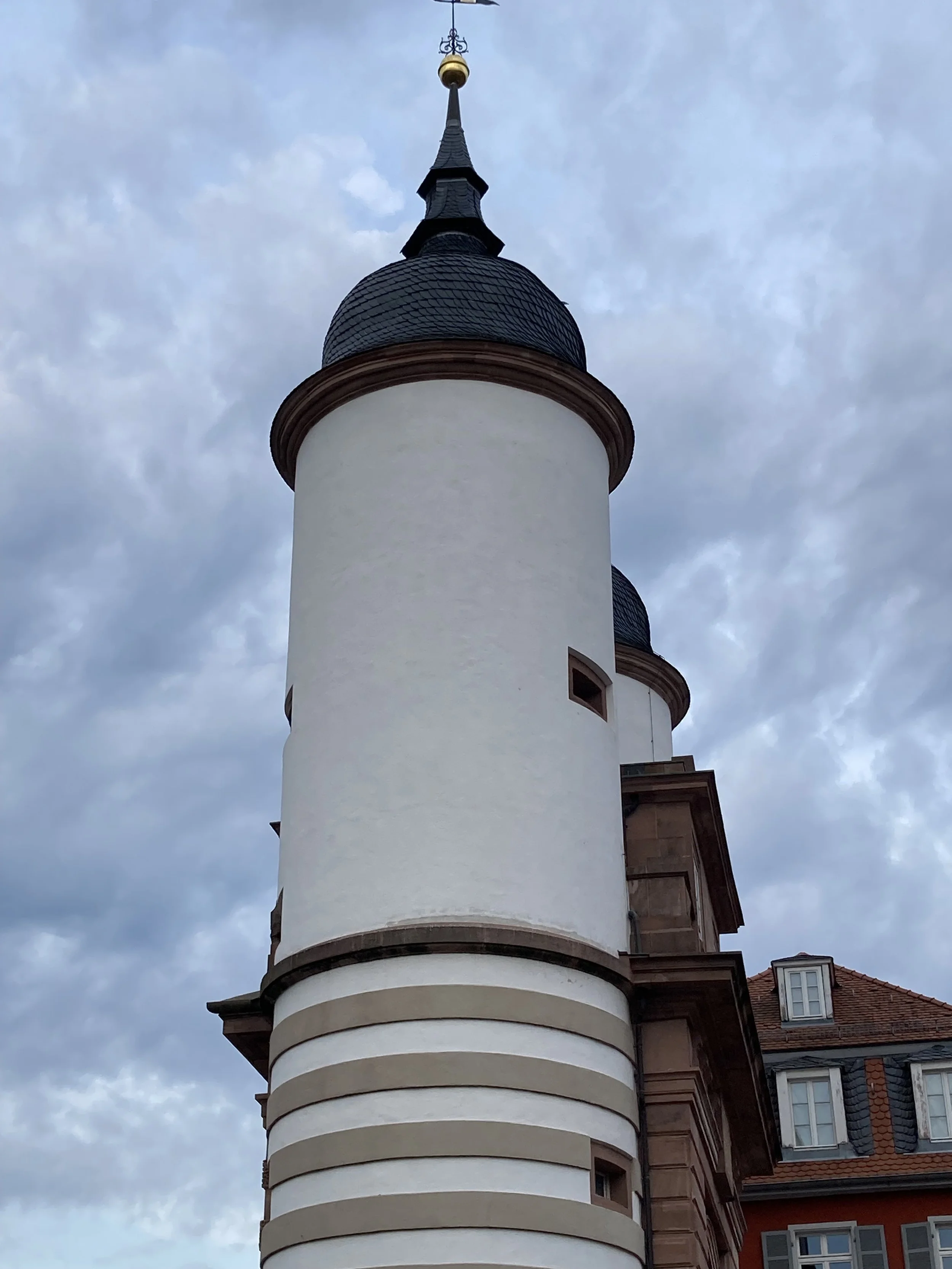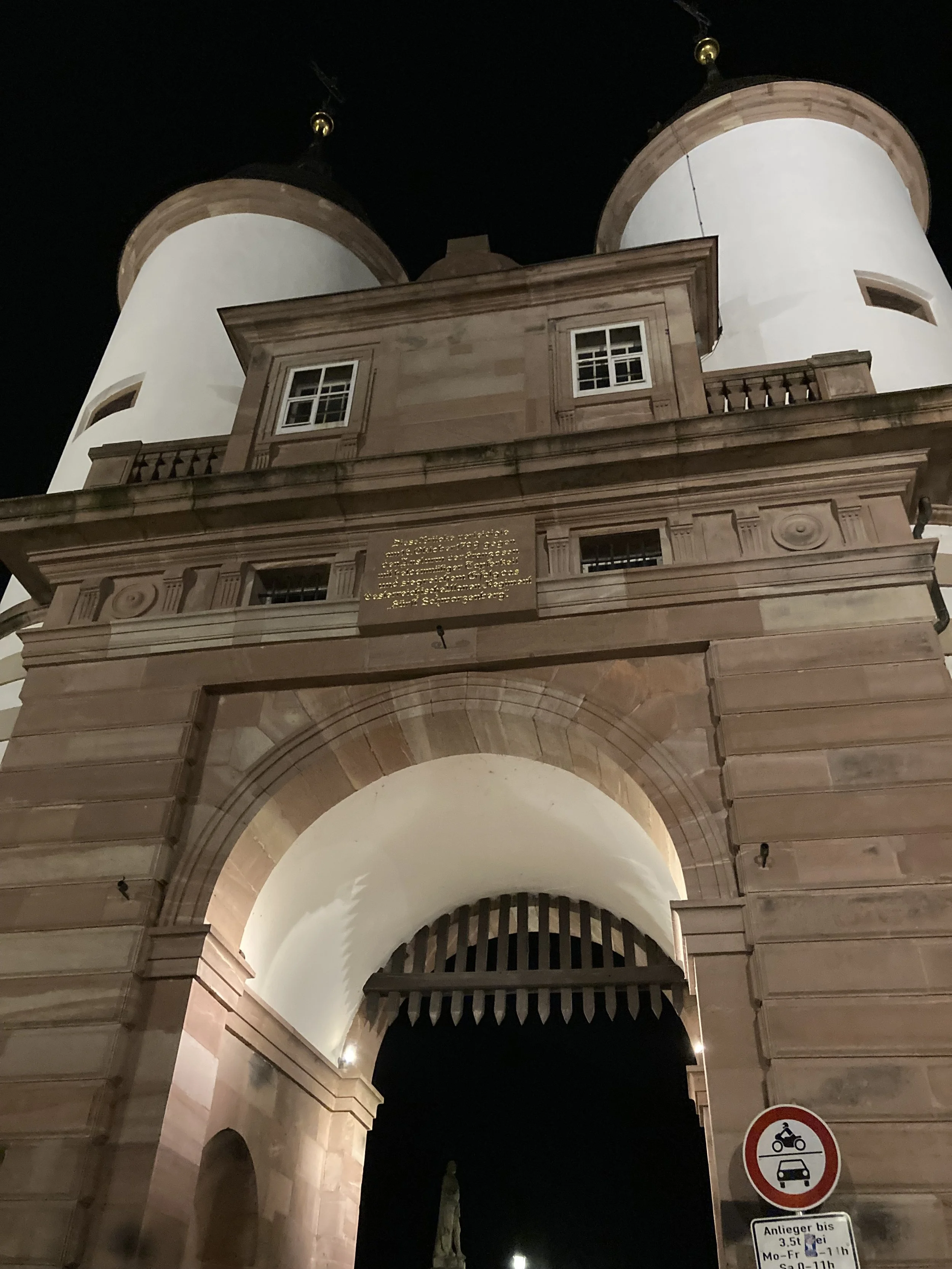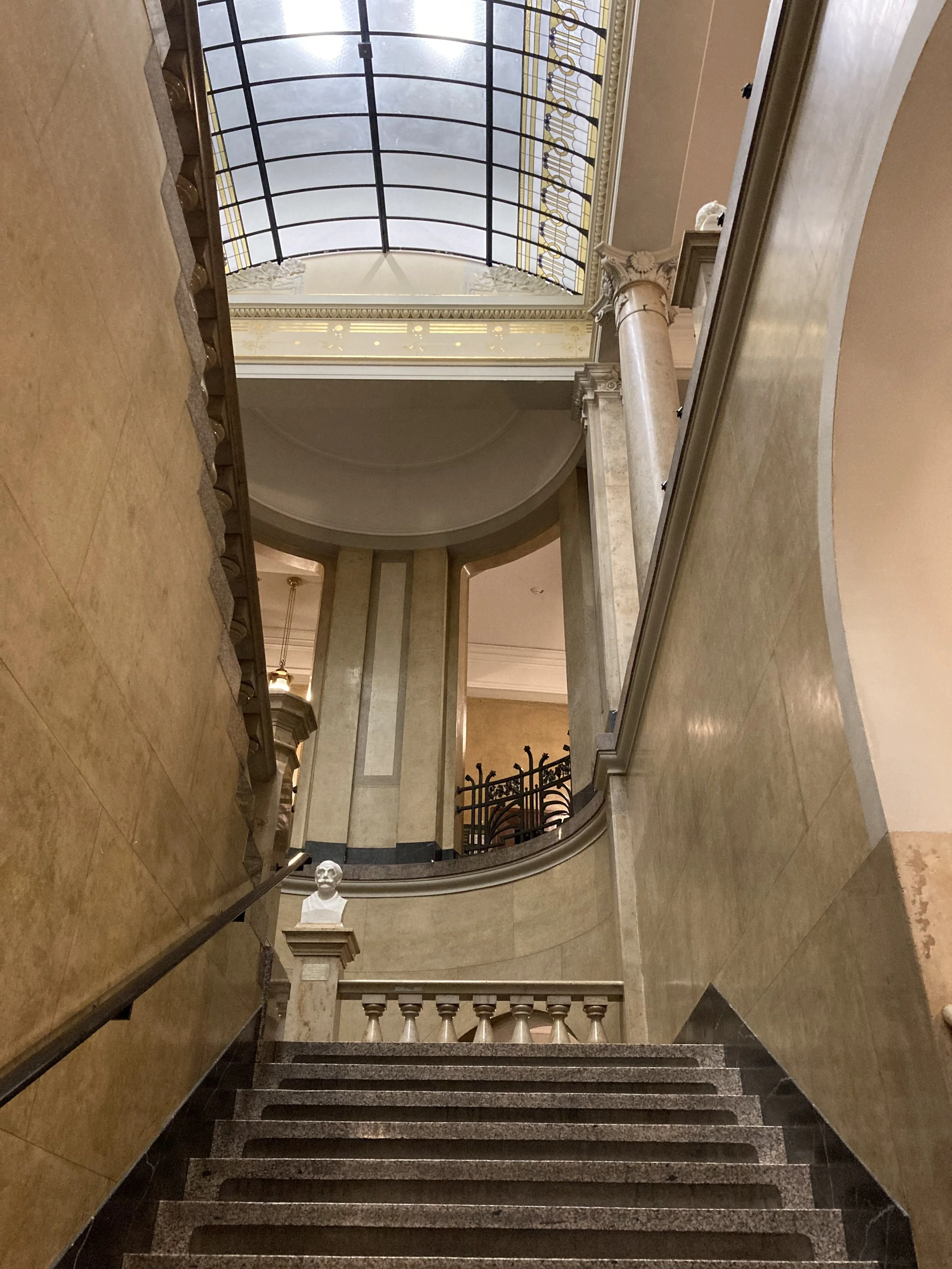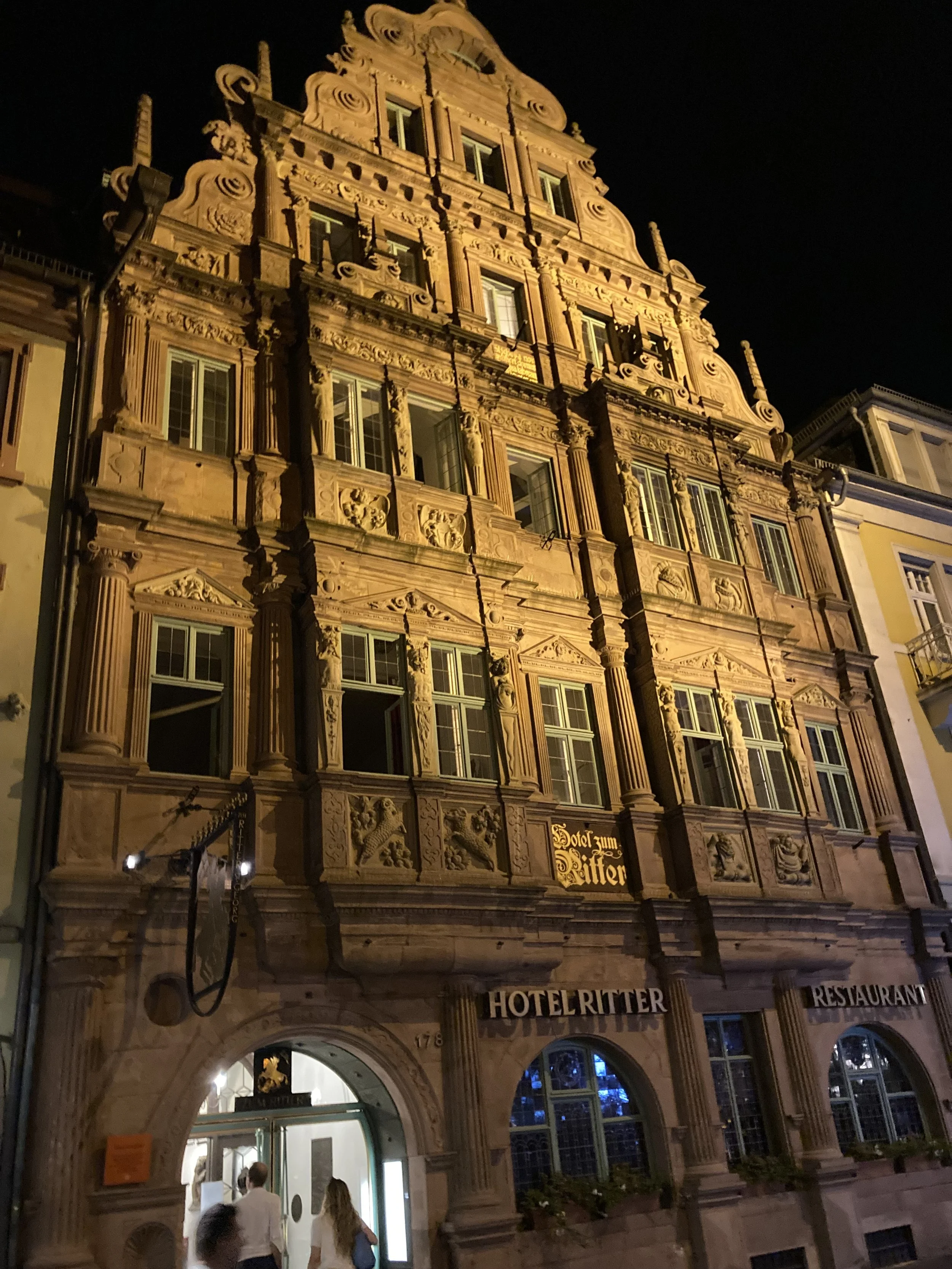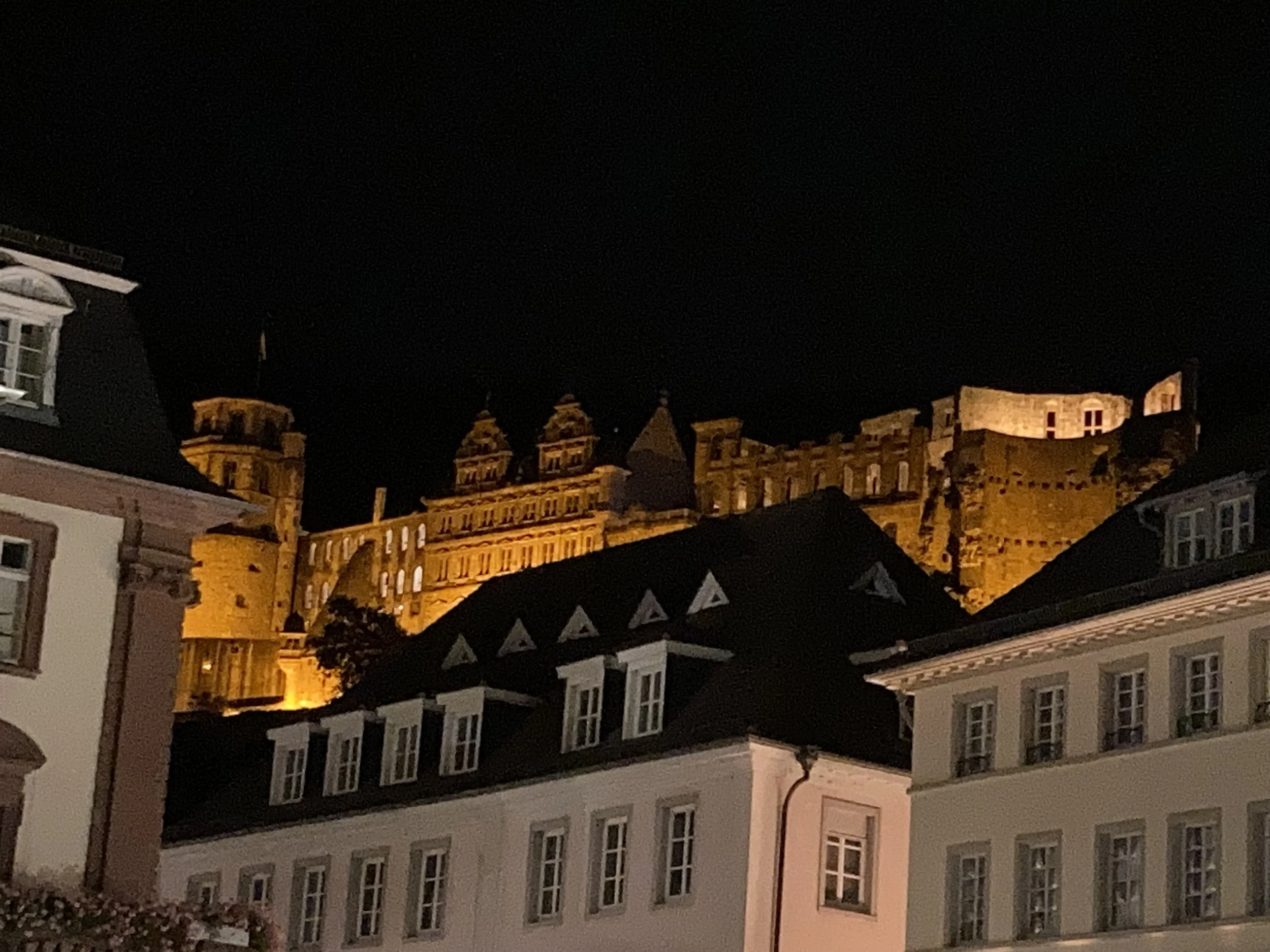Heidelberg, Germany (August 27, 2025)
This week, I’m taking it REALLY, really slow.
It was wonderful to be greeted in Manheim, Germany by my friend and colleague, Iv Jaeger, who is hosting me at her home for the next several days. The first thing I’ll share is that my timing is excellent when coming to the northern part of Germany — I’m talking specifically in regards to the weather conditions which are quite spectacular.
Once settled, I had the opportunity to meet Iv’s husband Thomas and ex-husband Marco who is best friends with Iv and Thomas. Marco is about to relocate to the northern part of the Netherlands to run a hotel on the ocean at the North Sea. Yes, it’s a difficult life, but someone has to do it.
From the left: Thomas, Iv, Bill & Marco in Heidelberg for dinner
For dinner, the four of us were joined by a fascinating couple with diverse careers in the financial sector. Prof. Dr. Hans Peter Grüner is a professor of Economic Policy at the University of Mannheim and a Research Fellow at the Centre for Economic Policy Research in London. Extremely bright guy as you can imagine and his wife Carmen who had her own incredible career in finance (i.e. investment banking). Very enjoyable dinner conversation.
After dinner, we took a stroll through Heidelberg and paid particular attention to the university campus. But before I go there, notice the top left-hand picture of the “Bridge Monkey.” I asked around and no one seemed to know what this was about. Further internet searches lead to more or less a consensus (although not total clarity). It seems the original 15th-century stone statue served as a warning to those entering the city and a symbol of mockery, holding its bare backside to the Bishops of Mainz. Then it was replaced in 1979 by artist Gernot Rumpf with something else in mind:
The monkey is a multifaceted symbol:
Humility: It reminds both Heidelberg residents and visitors that they are no better than each other.
Vanity and Vice: The mirror symbolizes vanity, while the naked rear end represents shamelessness.
Cleverness: The monkey's sneering expression and the mirror are a way of mocking observers and reducing them to their true size.
I’ll take it. Regardless, it’s a popular tourist stop as it’s located at the head of the “Old Bridge.” Yep, that’s what it’s called. You know, the “Old Heidelberg Bridge” as opposed any of the other ones in Heidelberg of which here are at total of 17 — most in relative proximity to each other.
The rest of the pictures you see there are primarily walking around the University of Heidelberg campus. As we exploring the campus the last week of August it seemed like many of the “pre-school year” activities were in high gear. Lots of college-aged youth enjoying meals together in the outdoor cafeteria, music blaring for parties bringing students together and even the library was active with students going in and out during the short stint we were exploring there.
Overall, a great first day in Heidelberg. I’m going to checkout the nearby town of Mannheim as well as make it up to the Heidelberg Castle. You can see the hint of this enormous building in the bottom right-hand picture (i.e. the last one). I think it’s important to see at least one church and one castle in each country in Europe, don’t you agree?



